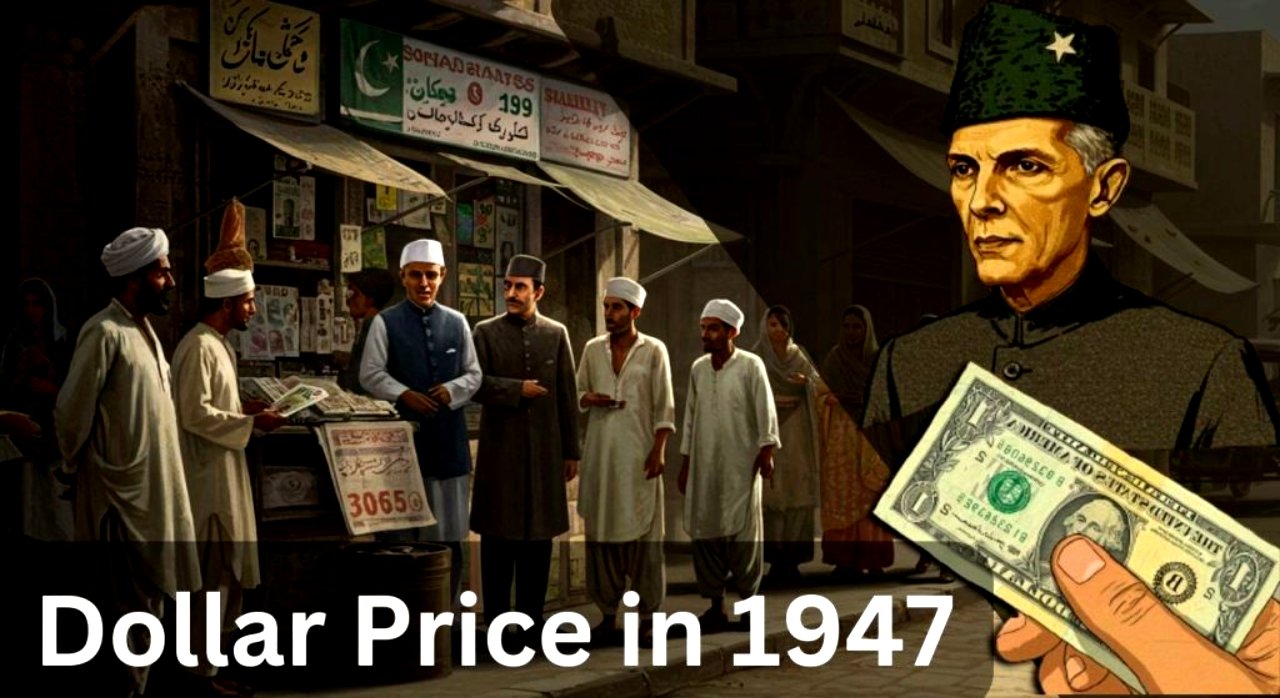1 USD to PKR in 1947

1 USD to PKR in 1947 – Historical Exchange Rate and Its Evolution Over Decades
The exchange rate between the US Dollar (USD) and the Pakistani Rupee (USD to PKR) is a critical marker of Pakistan’s economic journey since its independence in 1947. From an initial rate of 3.31 PKR per USD in 1947 to over 280 PKR per USD in 2024, the fluctuations reflect a complex interplay of political, economic, and global factors . This article explores the historical context, key milestones, and driving forces behind these changes.
The Founding Era: Stability Post-Independence (1947–1950s)
When Pakistan gained independence in 1947, its currency was pegged to the British Pound Sterling (GBP) at a rate of 13.33 PKR per GBP, which translated to 3.31 PKR per USD based on the USD-GBP exchange rate of the time . This stability was rooted in:
- Pegged Currency System: The PKR’s value was artificially stabilized through its link to the GBP, minimizing volatility .
- Limited Trade Reliance: Pakistan’s economy was agrarian and less dependent on imports, reducing pressure on foreign exchange reserves .
- Low Inflation: Post-independence inflation remained under control, preserving the rupee’s purchasing power .
For nearly a decade, the exchange rate remained unchanged at 3.31 PKR per USD until the mid-1950s, when economic challenges triggered gradual devaluation .
Decades of Devaluation: Economic and Political Turbulence
1950s–1970s: Early Devaluations
- 1955–1956: The PKR first depreciated to 4.76 PKR per USD due to economic strain from industrial development and reliance on foreign loans .
- 1971 Crisis: The Bangladesh Liberation War and subsequent economic collapse led to a sharp devaluation, with the rate jumping to 11.01 PKR per USD by 1972 . Socialist policies under Zulfikar Ali Bhutto further destabilized the currency .
1980s–2000s: Accelerated Decline
- 1980s: Under General Zia-ul-Haq, increased foreign aid during the Soviet-Afghan war temporarily stabilized the economy, but the PKR still fell to 20.54 PKR per USD by 1989 .
- 1990s: Political instability and fiscal mismanagement under alternating governments saw the PKR plummet to 51.90 PKR per USD by 1999 .
- 2008 Global Crisis: The PKR hit 81.1 PKR per USD as Pakistan grappled with energy shortages and IMF bailouts .
2010s–2024: Hyper-Depreciation
- Post-2018: Political upheaval, IMF loan conditions, and COVID-19 exacerbated the rupee’s decline. By 2023, the rate soared to 281 PKR per USD, reaching 280+ PKR in early 2024 .
Key Drivers of Exchange Rate Fluctuations
- Political Instability: Frequent regime changes (e.g., military coups, no-confidence votes) eroded investor confidence .
- Economic Policies: Mismanagement, inflation (peaking at 27.4% in 2023), and reliance on foreign debt strained the PKR .
- Global Factors: The USD’s dominance in trade (e.g., Saudi oil agreements) and geopolitical shifts (e.g., Pakistan’s attempt to trade with Russia in local currencies) influenced demand for USD .
- Market Speculation: Currency hoarding and black-market trading exacerbated volatility .
Comparative Analysis: 1947 vs. 2024
| Aspect | 1947 | 2024 |
|---|---|---|
| Exchange Rate | 3.31 PKR/USD | 280+ PKR/USD |
| Economic Model | Agrarian, limited trade | Import-dependent, service-led |
| Key Challenges | Post-partition reconstruction | Debt crises, inflation |
| Global Standing | Pegged currency stability | Volatile emerging market |
Conclusion: Lessons from History
The journey from 3.31 to 280+ PKR per USD underscores Pakistan’s struggle to balance economic sovereignty with global integration. While the 1947 rate symbolized a hopeful beginning, subsequent decades reveal the consequences of political mismanagement and external shocks. For Pakistan to stabilize its currency, structural reforms, export diversification, and fiscal discipline are imperative .


